Dog owners are often faced with various grooming decisions, and one that occasionally arises is whether it’s acceptable to trim a dog’s whiskers.
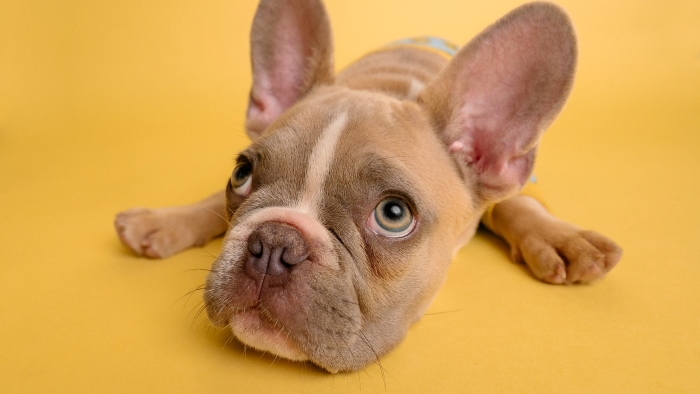
These delicate and prominent sensory hairs are not just another accessory on your furry friend’s face.
In this article, we will delve into the world of dog whiskers, their functions, and whether it’s appropriate to cut them.
Contents
What Are Dog Whiskers?
Dog whiskers, often referred to as vibrissae, are long, coarse hairs that emerge from certain follicles that are densely covered in nerves.
These nerves send signals to the dog’s brain when the whiskers touch or sense something in the environment.
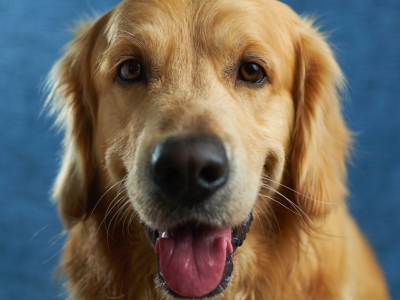
Dog whiskers are located on different parts of the face, such as above the eyes, on the muzzle, under the chin, and on the cheeks.
Different breeds have different whisker configurations, but all dogs have whiskers.
What Do Dog Whiskers Do?
Dog whiskers provide a variety of crucial roles for your dog’s health. These include, among others:
Protecting the eyes
The whiskers above the eyes act as a shield that prevents dust, dirt, or insects from getting into your dog’s eyes.
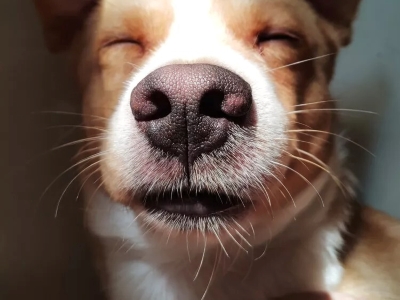
They also help your dog sense[1] when something is approaching and blink or move away accordingly.
Sensing the environment
The whiskers on the muzzle, chin, and cheeks help your dog feel their surroundings and detect changes in air currents, temperature, or vibrations.
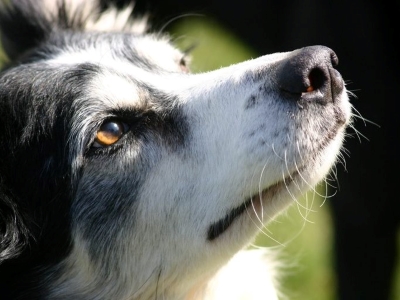
This helps your dog navigate in dark or unfamiliar places, avoid obstacles, and hunt prey.
Communicating emotions
The whiskers on the muzzle and cheeks also reflect your dog’s mood and emotions. When your dog is relaxed, their whiskers are usually pointing forward or sideways.
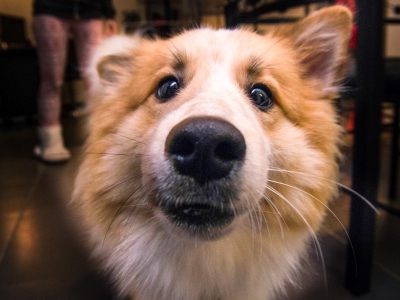
When your dog is tense, angry, or scared, their whiskers are pulled back or flattened against their face.
According to Dr. Marc Bekoff, professor emeritus of ecology and evolutionary biology at the University of Colorado, about senses and emotions on National Geography, “a lot of times dogs use composite signals, which includes information coming in from a cocktail of their senses, including sight, hearing, olfaction, and maybe through touch if someone is nervous.“
Can You Cut Dog Whiskers?
Technically, scissors, clippers, or tweezers can be used to trim a dog’s whiskers. The majority of veterinarians and dog specialists, however, do not advise this.
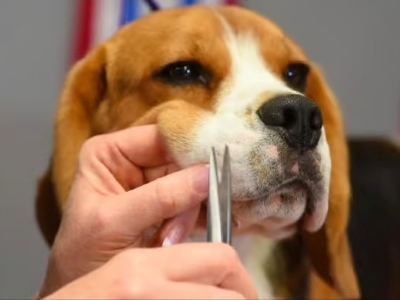
Cutting a dog’s whiskers can impair their capacity to see and engage with their surroundings. Your dog can experience discomfort, stress, or disorientation as a result[2].
If a dog’s whiskers are trimmed, some potential outcomes include:
Reduced vision
Cutting the whiskers above the eyes can expose your dog’s eyes to dust, dirt, or insects that can irritate or damage them.
It can also impair your dog’s ability to sense when something is approaching their eyes and react accordingly.
Cutting the whiskers on the muzzle, chin, and cheeks can affect your dog’s ability to feel their surroundings and detect changes in air currents, temperature, or vibrations.
This can make it harder for your dog to navigate in dark or unfamiliar places, avoid obstacles, and hunt prey.
Altered communication
Cutting the whiskers on the muzzle and cheeks can change your dog’s facial expressions and signals.
This can make it difficult for other dogs or humans to read your dog’s mood and emotions.
Is It Painful to Cut Dog Whiskers?
Cutting a dog’s whiskers is not painful in itself, as the whiskers do not have nerve endings. However, it can cause discomfort or irritation for your dog if you cut too close to the skin or pull on the follicles.
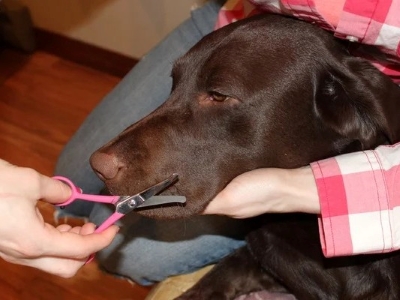
It can also cause stress or anxiety for your dog if they feel that something is wrong with their face.
Do Dog Whiskers Grow Back?
Yes, dog whiskers do grow back after being cut. However, this may take several weeks or months, depending on your dog’s breed and hair growth cycle[3].
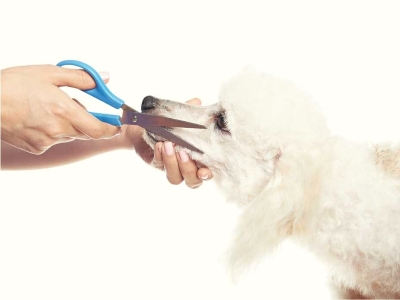
During this time, your dog may experience some of the negative effects of cutting their whiskers, as mentioned above.
How to Care for Your Dog’s Whiskers
Leaving your dog alone and allowing them to perform their job is the best way to take care of their whiskers.
But occasionally, for sanitary or purely aesthetic reasons, you may need to cut or groom your dog’s whiskers. For example:
- If your dog has an injury or infection on their face that requires treatment or cleaning,
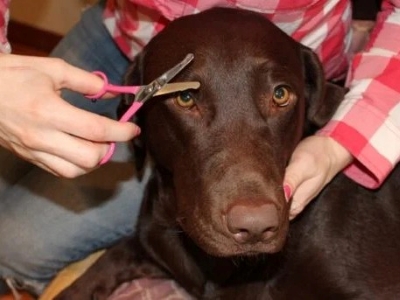
- If your dog has excessively long or curly whiskers that interfere with their vision or eating,
- If you want to give your dog a specific look for a show or competition,
In these cases, you should follow these tips to trim or groom your dog’s whiskers safely and properly:
- Use hair–trimming tools like sharp scissors or clippers.
- Cut only the tips of the whiskers and avoid cutting too close to the skin or follicles
- Cut only one or two whiskers at a time and check how your dog reacts
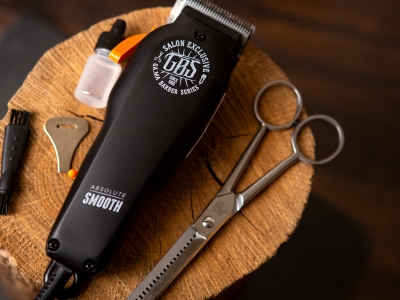
- Stop in case your pooch appears to be showing signs of inconvenience, push, or torment
- Reward your dog with praise, treats, or toys after trimming or grooming their whiskers
FAQs
Are there any breeds that don’t have whiskers?
All dog breeds have whiskers to some extent. However, the visibility and prominence of whiskers can vary depending on the breed and individual dog.
Can I touch my dog’s whiskers?
Gently touching your dog’s whiskers is generally safe and can be a way to bond. Just be cautious not to apply excessive pressure, as whiskers are sensitive and should be treated with care.
Are there any grooming alternatives to keep my dog looking neat?
Absolutely! Regular grooming is essential for your dog’s overall well-being. Focus on brushing their coat, cleaning their ears, trimming nails, and maintaining dental hygiene to keep them healthy and clean.
What if my dog’s whiskers are damaged or broken?
If a dog’s whiskers are damaged, it’s best to let them naturally regrow. Cutting or trimming damaged whiskers won’t expedite the process and might cause discomfort.
Are there any situations where trimming whiskers is necessary?
In some medical situations, a veterinarian might trim a dog’s whiskers. This could be during a surgical procedure or if the whiskers are causing discomfort due to damage or infection.
Conclusion
Dogs’ whiskers are crucial sensory organs that aid in perception and navigation in the outside environment.
The capacity of a dog to detect and engage with their surroundings might be negatively impacted by shaving their whiskers. Your dog can feel uncomfortable, stressed out, or confused as a result.
Therefore, unless it is essential for health or cosmetic reasons, it is not advised to trim a dog’s whiskers.
If you do need to clip or groom your dog’s whiskers, make sure to use the proper equipment and methods while being gentle and careful.
Additionally, after shaving your dog’s whiskers, you should keep an eye on their behavior and general health.
If you detect any issues, call your physician. By respecting and caring for your dog’s whiskers, you can help your dog live a happy and healthy life.
Reference:
- Canine Senses | PAWS Chicago
- Stress in Dogs | Bluecross
- The canine hair cycle | National Library of Medicines

Dania is a dog groomer living in California, who loves styling dogs. She often uses dog accessories to keep them distracted while grooming. She is also a dog parent to a Pomeranian, Duke. It’s because of him she is always on a lookout for the best dog foods, toys, other dog accessories, and ways to keep him equipped, healthy and happy.


